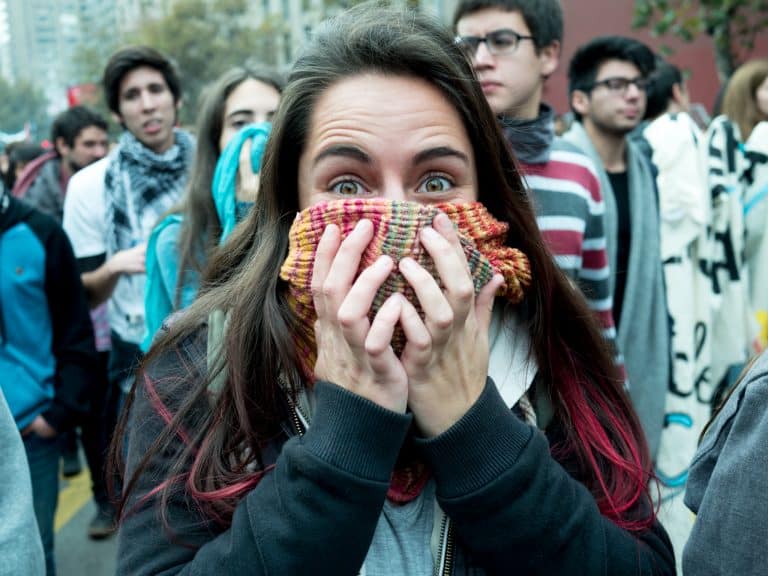Art and Empathy: Acts of Gratitude in the Face of Violence
Thanksgiving is approaching, and at this time of year we are frequently called to meditate upon the manifestations of gratitude framing our lives. What is gratitude, really? Giving thanks or appreciation? Acknowledging one’s indebtedness to something beyond oneself?
In this second definition lies the key to understanding how gratitude is a powerful spiritual practice. The lexical distinction between “thankfulness” and its sister “gratitude” is the former can be done to oneself: “I’m so thankful I resisted another cocktail last night,” or “I’m so thankful I got all the laundry out of the way.” Self-gratitude is harder to conceptualize. We are not grateful for our own willpower, our own piety, or our own beauty. To express gratitude for such things is to necessarily give a nod to some individual or force beyond our control.
Gratitude — which we know intuitively from prayer or meditation and empirically from the countless scientific studies proclaiming that gratitude will make your life better — functions as an infinite feedback loop, creating and returning positive energy. It is upon this voluntary, diffuse, and reciprocal exchange of positive energy that our society depends.
In this regard, gratitude is a type of leadership. Toni Morrison alludes to the cyclical nature of gratitude:
“I tell my students, ‘When you get these jobs that you have been so brilliantly trained for, just remember that your real job is that if you are free, you need to free somebody else. If you have some power, then your job is to empower somebody else. This is not just a grab-bag candy game.”
Her words suggest that “paying it forward” is our responsibility and, indeed, our privilege, to structure our lives around the question, “What am I doing to lift others up?” Undoubtedly, organizing our lives and our society more deliberately around such a spiritual practice would have palpable, positive consequences.
Aren’t there other ways to be grateful, aside from “paying it forward”? We express gratitude for the divine, to which we can attribute no temporal source, as Naomi Shihab Nye does in her poem “Blood.” She thanks the heavens for her name, Shihab, which means “shooting star”:
Years before, a girl knocked,
wanted to see the Arab.
I said we didn’t have one.
After that, my father told me who he was,
“Shihab”—“shooting star”—
a good name, borrowed from the sky.
Once I said, “When we die, we give it back?”
He said that’s what a true Arab would say.
Or, likewise, when Nye expresses gratitude to the sheep, cows, and air of the countryside for providing her solace from the cruelty of the world:
I call my father, we talk around the news.
It is too much for him,
neither of his two languages can reach it.
I drive into the country to find sheep, cows,
to plead with the air:
Who calls anyone civilized?
Where can the crying heart graze?
What does a true Arab do now?
Likewise, in Mahmoud Darwish’s poem “To My Mother,” the narrator expresses gratitude for a specific person’s actions and influences:
Dearly I yearn for my mother’s bread,
My mother’s coffee,
Mother’s brushing touch.
Childhood is raised in me,
Day upon day in me.
And I so cherish life
Because if I died
My mother’s tears would shame me.
I intuitively understand this impulse because I do it myself. I brag about my mother to other people all the time, so keen for them to know how proud I am of who she is and continues to become. Yet there is a danger here. If gratitude is exclusively private, or if it is expressed only to others rather than the individual toward whom we feel that gratitude, there develops a discrepancy between the warmth of gratitude that we internally experience and the light of gratitude that we give off. Which raises the question, What is the purpose of gratitude? Is it to acknowledge our own indebtedness in order to balance our checkbook with God, and thus fill out the silhouette of our own spiritual wholeness?

Or is gratitude more than that — not a private meditation but a public one in which we express our gratefulness for our name or our planet, our mother, or our God? Where is the link between needing, as a society, to be grateful for our blessings and the responsibility Morrison describes to structure our lives around the question, “What am I doing to lift others up?”
A space exists here between the reception and the release of gratitude. We have an obligation not only to receive the generative, healing properties of gratitude but also to bear witness to them before others. It is by including others in our experience of gratitude that we release gratitude. It is by releasing gratitude into the world that we dull the preeminence of the self and instead bring our common humanity into relief. It is by connecting ourselves to one another through the reception and release of gratitude that we begin to illuminate this space in which we coexist with one another. Write a poem that says “I thank the heavens for the identity that I derive from my name and the family that it holds” or “I thank my mother for planting all the strength and wisdom and love that has ever blossomed in me” or “I thank the sheep and the cows and the countryside for the solitude that allows me to perceive the sacred amidst great sadness.” These poetic sentiments are like cairns that hikers build, each one placing a single stone onto piles, built collectively, which over time allow any single hiker to navigate the path in a storm.
In our case, it is only by an orientation towards gratitude, a commitment to place with intention the stones of our gratitude as they are revealed to us, that we can collectively work to chart a path through the exhaustion and agony that the world confronts us with. An elemental example of these cairns of truth are works of art, whether they be poems or paintings or music. Indeed, bearing witness to truth, expressing gratitude for the revelation of truth, serving as beacons to illuminate our encounters with a broader truth, these are the singular objectives of art. They are why we, as a species, do art.
In this season of thanksgiving, in the wake of the senseless destruction that has engulfed Sinai, Beirut, Baghdad, and Paris — and which, despite our best efforts and deepest prayers, may well continue — write a poem or memorize one, draw a portrait of your sister, or take her to a museum. Appreciation and reverence of art is a form of gratitude towards humanity.
Living with intentional gratitude is a revelation of truth akin to that of artistic expression. As many pundits and religious intellectuals affirm, the best way to defeat the message of hate propagated by terrorists is by living out a creed of love that reveals those messages to be untrue. While it may be a frightening prospect in our current climate of fear, the impulse to take in ever more refugees and welcome them with a love redolent of our own gratitude is likely the most powerful counter-narrative to the rhetoric of hatred propagated by those from whom those refugees run.
Whether it is through the creation of art, the extension of kindness, or by simply kissing one’s mother on the forehead, we have a responsibility, as members of one body of humanity, to do what great artists and leaders across time and space have done: To place with intention those stones that are revealed to us, to build up those cairns of truth by which we pass, in whatever way we can, so that the wisdom of the whole can be deliberately structured to lift up the individual.
It is in this art, in our testimonies to the truths extending beyond ourselves, that we can begin to heal the wounds that at present fragment the body of humanity. It is through our spiritual release of gratitude into the world that we begin to truly see one another. In so doing, we can begin to walk in the light of our collective and continuous revelation.


Share your reflection